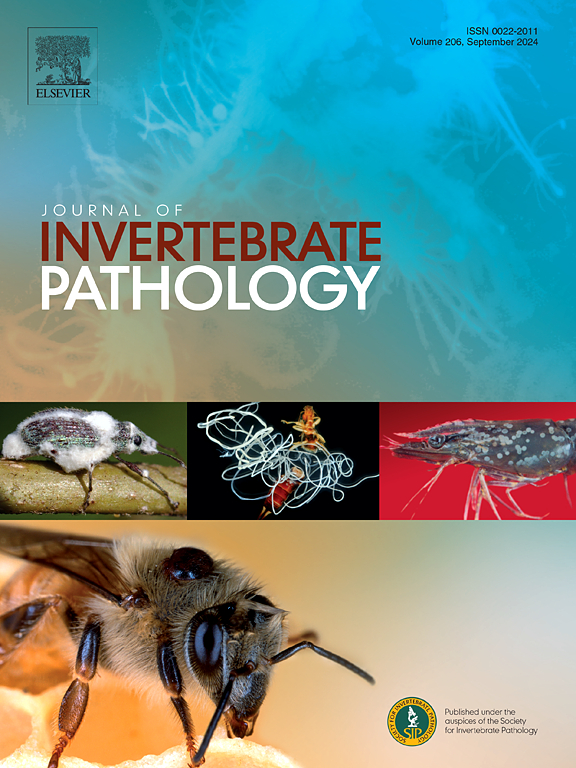Effects of insect odor cues and infective juvenile age on the host-seeking behavior of Steinernema siamkayai
IF 3.6
3区 生物学
Q1 ZOOLOGY
引用次数: 0
Abstract
Entomopathogenic nematodes (EPNs) are soil-dwelling, insect-parasitic nematodes used in biological control. Infective juveniles (IJs), a third-stage free-living stage, are responsible for foraging and infecting suitable insect hosts, exhibiting cruising, ambushing, or intermediate foraging strategies. Steinernema siamkayai, an ambush forager, is a valuable biological control agent in Thailand, yet little is known about its behavioral response to host cues and insect odors. This study examines the olfactory responses of S. siamkayai IJs to insect odorants, including CO2, compared to an ambusher, S. carpocapsae, and an intermediate forager, S. monticolum. Using a chemotaxis assay on agar plates, we found S. siamkayai and S. monticolum were attracted to insect odors, but attraction diminished when CO2 was removed with soda lime, whereas S. carpocapsae showed minimal attraction. S. siamkayai and S. monticolum exhibited a stronger response to CO2 than S. carpocapsae. Additionally, in a sand column assay assessing vertical movement, all three EPNs responded to insect odors from below, with odor response declining as IJ age increased, indicating age-related changes in host-seeking behavior. These results suggest that although S. siamkayai and S. carpocapsae are ambushers within the same phylogenetic clade, their host detection mechanisms differ.

昆虫气味线索和感染幼体年龄对暹罗斯坦纳虫寻主行为的影响
昆虫病原线虫(epn)是一种寄生于土壤中的昆虫线虫,用于生物防治。感染性幼虫(IJs)是第三阶段的自由生活阶段,负责觅食和感染合适的昆虫宿主,表现出巡航、伏击或中间觅食策略。Steinernema siamkayai是一种埋伏觅食动物,在泰国是一种有价值的生物防治剂,但人们对其对宿主线索和昆虫气味的行为反应知之甚少。本研究考察了siamkayai IJs与伏击者S. carpocapsae和中间觅食者S. monticolum相比,对昆虫气味(包括CO2)的嗅觉反应。在琼脂板上进行趋化性实验,发现siamkayai和S. monticolum对昆虫气味具有趋化性,但当用苏打石灰去除CO2时,这种吸引力减弱,而S. carpocapsae对昆虫气味的吸引力最小。山楂和山楂对CO2的响应强于山楂。此外,在评估垂直运动的沙柱试验中,所有三种epn都对来自下方的昆虫气味有反应,随着IJ年龄的增加,气味反应下降,表明寄主寻找行为的年龄相关变化。这些结果表明,虽然S. siamkayai和S. carpocapsae在同一个系统发育分支中是伏击者,但它们的宿主检测机制不同。
本文章由计算机程序翻译,如有差异,请以英文原文为准。
求助全文
约1分钟内获得全文
求助全文
来源期刊
CiteScore
6.10
自引率
5.90%
发文量
94
审稿时长
1 months
期刊介绍:
The Journal of Invertebrate Pathology presents original research articles and notes on the induction and pathogenesis of diseases of invertebrates, including the suppression of diseases in beneficial species, and the use of diseases in controlling undesirable species. In addition, the journal publishes the results of physiological, morphological, genetic, immunological and ecological studies as related to the etiologic agents of diseases of invertebrates.
The Journal of Invertebrate Pathology is the adopted journal of the Society for Invertebrate Pathology, and is available to SIP members at a special reduced price.

 求助内容:
求助内容: 应助结果提醒方式:
应助结果提醒方式:


